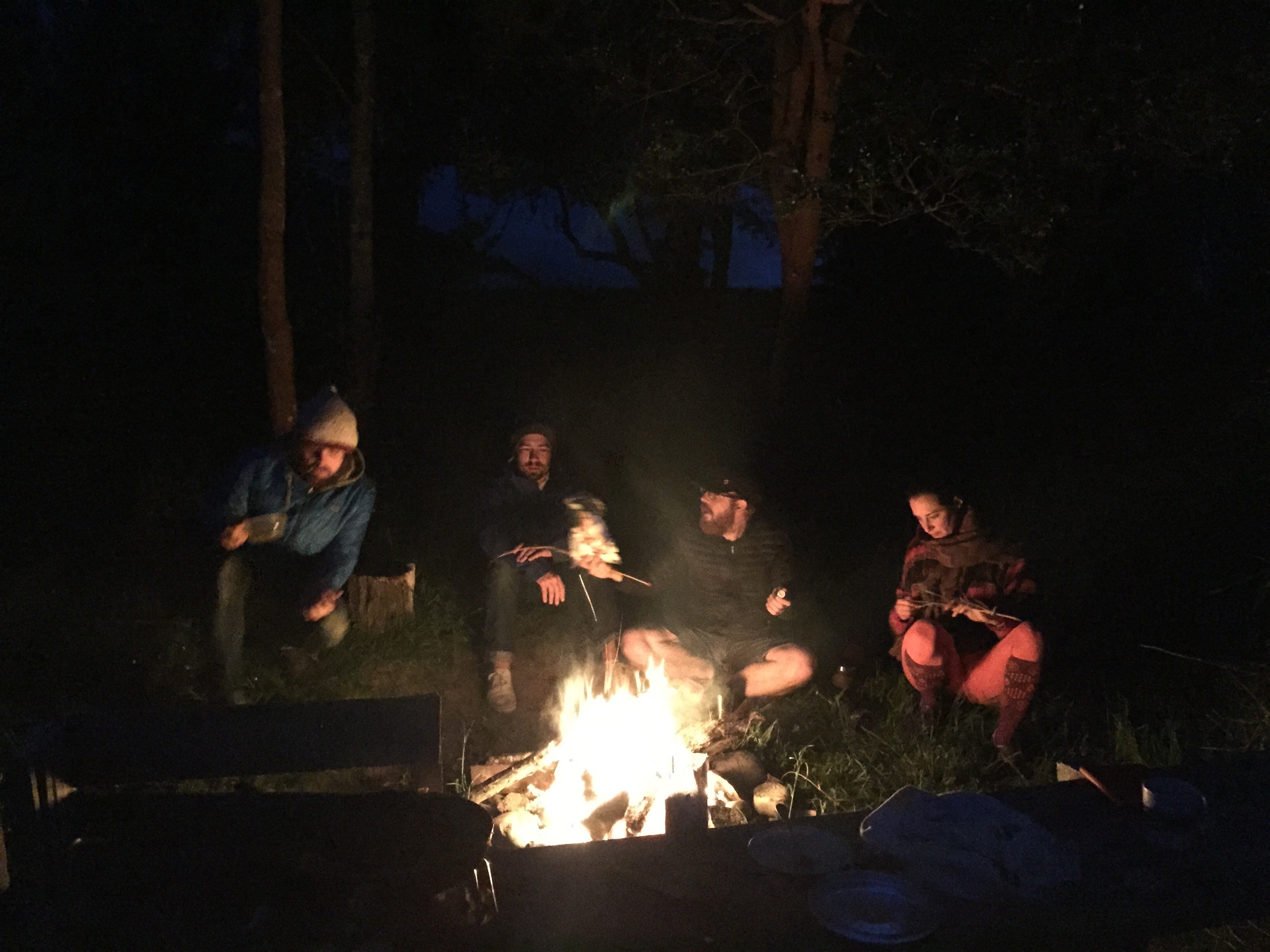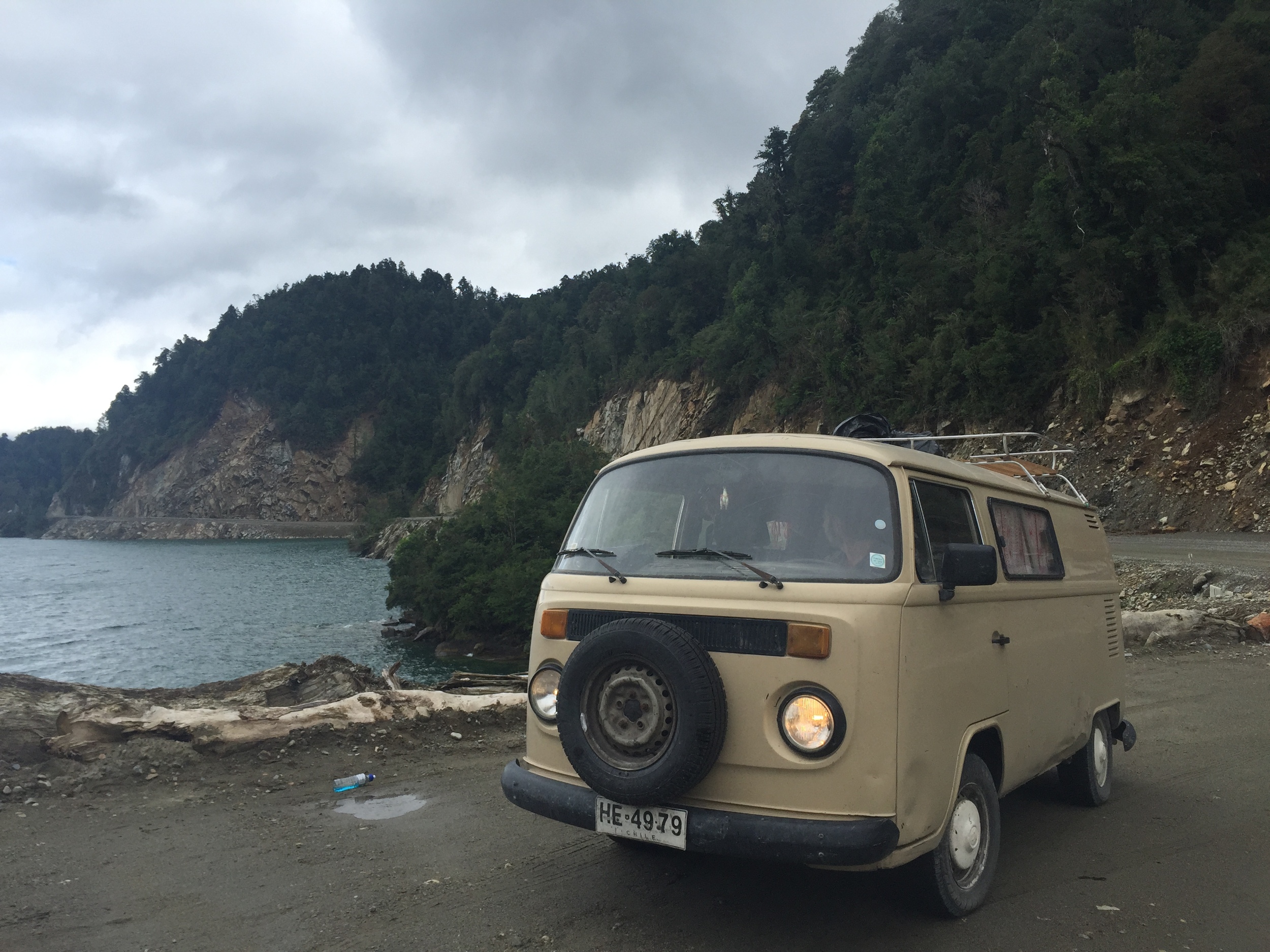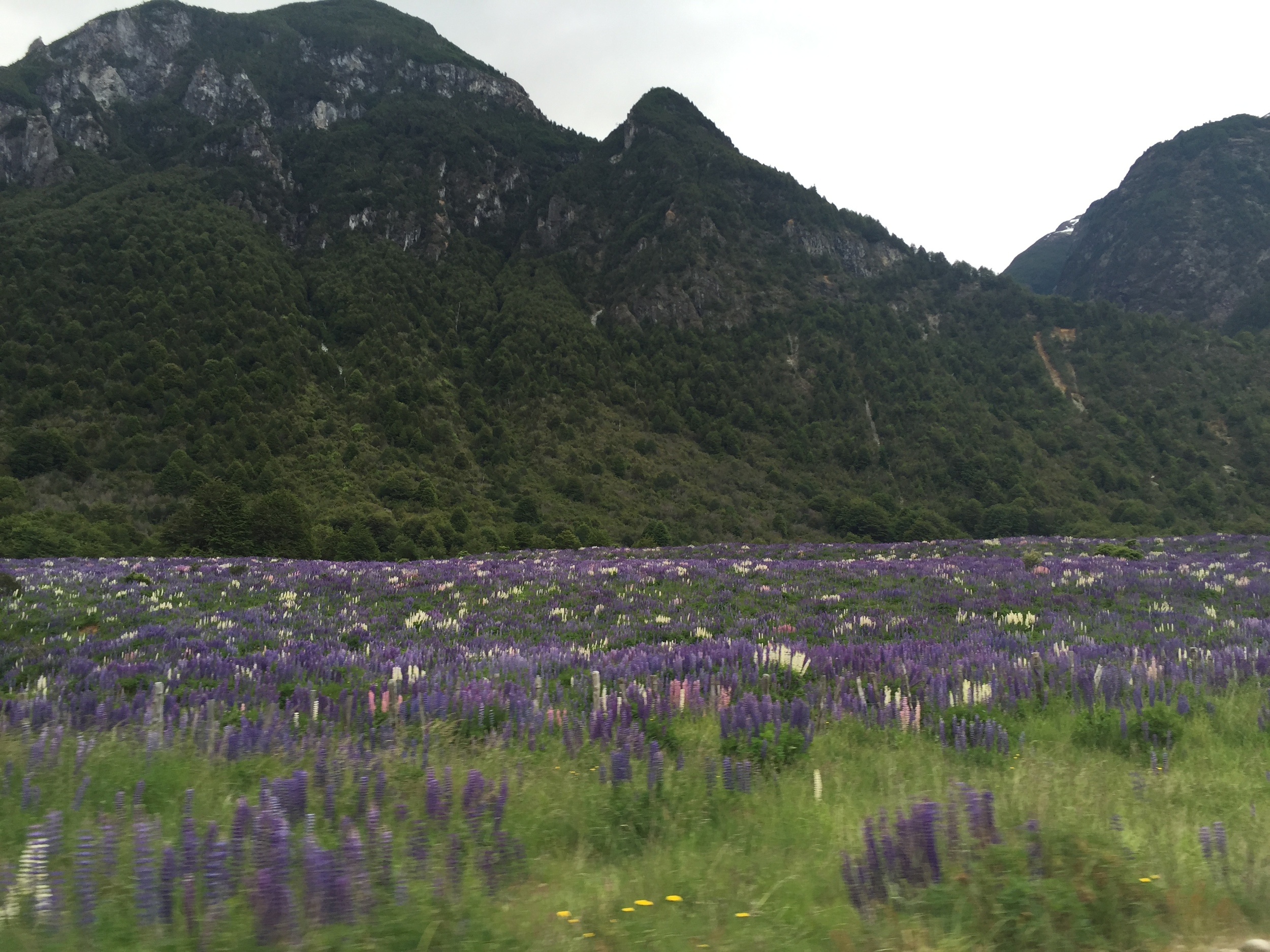South, South, And More South—The Carretera Austral
Hello dear friends and family. In an effort to get caught up on our blog posts, I’m jumping in to help tell the tale of our South American adventures. Last we left you, we were wrapping up our time in Futaleufu, the friendliest town in Chile. Still high from our few days of rafting, cake consumption, and campfire laughs, we loaded up Pepe (B+B’s VW Vanagon) and Masi and took the gravelly, dusty road out to meet up with the Carretera Austral, Chile’s famous Southern route.
Nice to meet you Carretera!
A note on the Carretera, or Chile’s Route 7—it was started in 1976 under the Pinochet regime in an effort to connect the remote Patagonian communities with the rest of Chile. What began as a mostly unpaved road over fjords, past glaciers, and over steep mountains is now a more or less (sometimes a lot less) paved road that stretches 770 miles from Puerto Montt to Villa O’Higgins. For anyone driving in South America, this is a road trip not to be missed. Keep reading to understand why.
Up ‘til now, we had been fairly lucky with mostly paved roads. But now we steeled ourselves for what was sure to be a bumpy ride. For us it was all part and parcel to experience the magic of such a remote and wild place. Our first driving day on the Carretera saw us winding past lush forest and icy lakes. That first night we spent wild camping by a river in La Junta—also the town where Danny and I spied an extremely pregnant dachshund resting behind the counter of the gas station minimarket. The owner proudly showed off photos of the handsome dachsie father-to-be and we left thinking how cool it would be to add a Chilean dachsie pup to our family…
How we spend most of our nights in Patagonia.
In the morning we were off again, this time to explore Parque Nacional Queulat, made up of Valdivian temperate rainforest (read cold and wet and full of amazing moss and plants with giant leaves) and home to the Queulat Hanging Glacier, Danny’s and my first! The hike up to see the glacier was stunning—it began with a river crossing over milky greenish-blue water (the result of minerals from the glacial runoff) and wound through the lush, mossy rainforest up to the viewpoint for the glacier where we partook in what has become a favorite ritual thanks to Bridget: tea and Toddies! After a filling dinner of campfire empanadas a la chef Brendan, the pizza dough king, we called it a night and headed out the next morning for Coyhaique, the biggest city along the Carretera.
The next day’s drive took us past more temperate rainforest, one aptly named the Enchanted Forest. It was raining so we didn’t stop, plus we had a mountain to get up and over. The steep and twisting mountain road eventually gave way to wide open valleys blanketed in pink, purple and white lupine. While not a native species, it was a joy to drive these roads just as the lupine was blooming. We stopped for the night at an eco-farm campground just north of Coyhaique. The owner, Nacho (or Nacho 1 as we would come to call him), welcomed us enthusiastically and immediately grabbed Danny for a guitar jam session. He also gave us a tour of his organic lettuce farm and treated us to an educational maté ritual. Overall a beautiful and relaxing stop before making a pit stop in the “big” city.
Coyhaique. What to say? It’s a big city and we usually prefer to avoid them at all costs. However this visit was made necessary by needing to refill cooking gas tanks and do some grocery shopping. Unfortunately, we ended up staying a bit longer than we wanted because some shoddy mechanic work we had done in Buenos Aires caused Masi to break down. It took us the better part of a day to track down an electro-mechanic, but he was able to fix our girl and we were on our way again with only a bit of time lost and a couple more grey hairs.
The next day we arrived in Cerro Castillo, a town that gets its name from the stark mountain rising from the valley. And yes, it looks like a castle. In the morning we set out on a hike to its base. Now, here is where I’ve learned that expectation setting is everything when it comes to hiking. This was a tough one and had I known I think I would have handled it better. It’s basically four hours straight up to the base of the Cerro with a very exposed, windy, and icy cold final stretch. That said, the views were stunning and made it all worth it. Ramen noodles, tea, and photo ops at the top, then back down.
At last we reached what was to be the final stretch (for us) of the Carretera Austral. Though the road continues south of Coyhaique all the way to Villa O’Higgins, there is no way to continue further (cuz the glaciers are in the way) which makes doubling back necessary. So instead we turned east along Lago General Carrera intending to cross the border into Argentina to continue south. We had been looking forward to Lago General Carrera because they are home to the Marble Caves, stunning rock formations in the middle of the lake that you can visit by boat or kayak. But our excursion was made a bit more somber by the news that Doug Tompkins, the co-founder of the North Face, had died on the lake in a kayaking accident only days before. Before we started this trip, we had seen the documentary 180° South and learned more about his life as a climber and conservationist. Suffice it to say that he was a large part of our inspiration for this trip and we are grateful that we have had the opportunity to see first hand why he was so passionate about preserving Patagonia for future generations.
Photo cred to the ever talented Brendan Murton.
After a successful kayak to the Marble Caves, we hopped back in the vans and went in search of a suitable camp spot for the night. It took us longer than we expected but as is often the case when looking for that perfect wild camp, our efforts were rewarded. We ended up on a small beach with incredible views of the lake and mountains in the distance. Another round of tea and Toddies, a shared meal and good campfire conversation later, we turned in and prepared for the drive to the Chile/Argentina border the next day.
Our wild camp at the edge of Lago General Carrera.
The drive would take us along the edge of Lago General Carrera, which, you guys, is huge (over 100 miles long). And stunningly beautiful. See below for evidence of the vast, turquoise body of water. We had a great time taking it slow and stopping every so often to pile out of the vans and take pictures. We stopped for the night in Chile Chico on the Chilean side of the border. Our campground host, Nacho 2, treated us to stories of his early life as a rock star and policeman (we tried not to think too hard about what being a policeman meant during the Pinochet regime) and also helped us build a roaring fire and roast a huge rack of ribs for dinner. We bid him adieu the next day and made our way to the border, Argentina, and famed Ruta 40. Next stop? Puerto Natales and Torres del Paine!



















